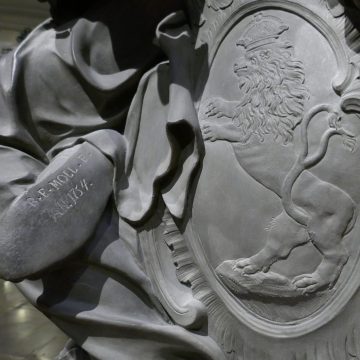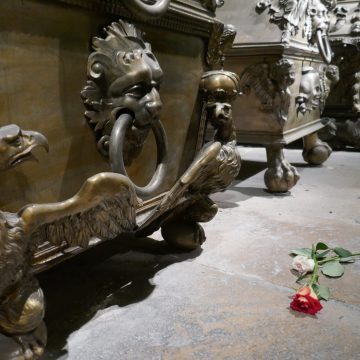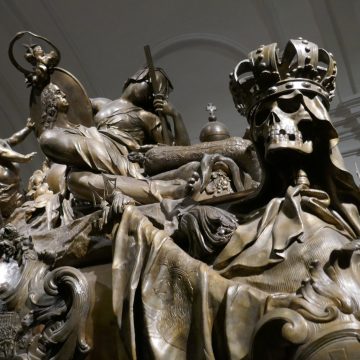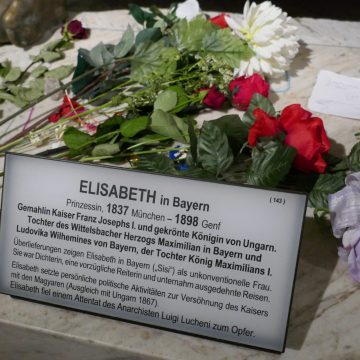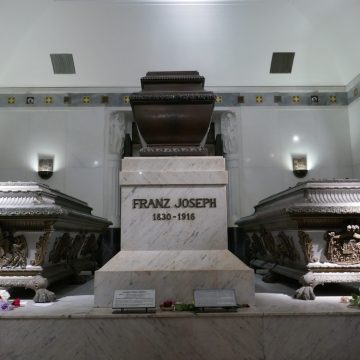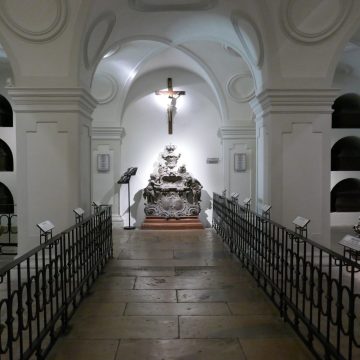The burial place of the Habsburgs in Vienna
The Capuchin Crypt in Vienna
Three times the master of ceremonies knocks at the gate of the Capuchin monastery. Twice he is refused, only when his answer is "a sinful, mortal man", a Capuchin brother opens the gate of the monastery and the coffin is laid to rest in the imperial crypt.
Unfortunately, during the guided tour of the Imperial Crypt, I learn that this entrance ceremony belongs to the realm of legends. No written burial record of the Habsburgs tells of the knocking ceremony; the ritual with the spoken words first took place at the burial of Empress Zita in 1989. After Empress Zita, two more of her sons (Otto von Habsburg and Archduke Carl Ludwig) and a daughter-in-law (Regina von Sachsen-Meiningen) were buried in the crypt. A single place is still vacant and this will probably be occupied by Yolande de Ligne, the wife of Archduke Carl Ludwig.
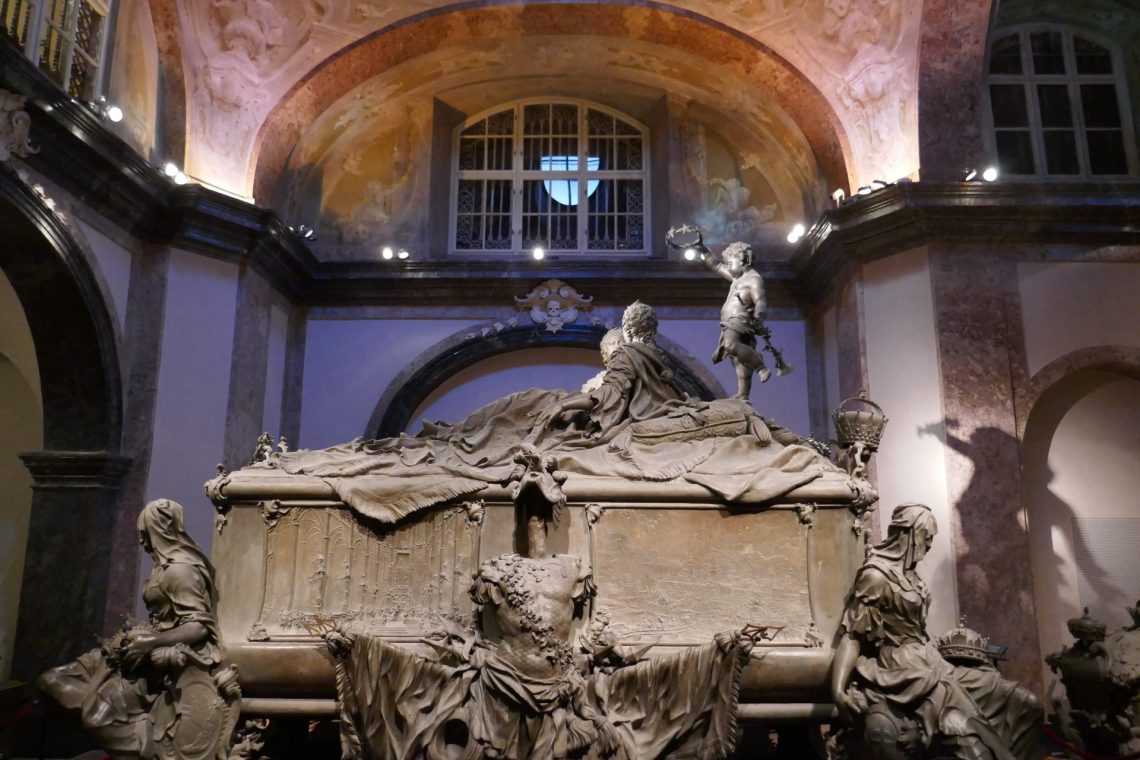
The history of the Capuchin Crypt
Originally, the crypt was intended for exactly two coffins. In 1617, Empress Anna donated 10,000 florins to the Capuchins for the construction of the Capuchin church and another 12,000 florins for an altar and a crypt. Anna died just one year later at the age of 33, and her husband followed her three months later. The burial place was far from being finished; the Thirty Years' War slowed down the building project. It was not until 1633 that both coffins could be transferred to the crypt under the Capuchin church.
And actually it should remain with these two coffins, but death took over the direction. Within a week, both sons of Emperor Ferdinand III died, and his wife Maria Anna succumbed to pregnancy poisoning a few years later. Finally, the emperor decreed that he be buried with his wife and children, and thus the sarcophagi piled up on top of each other in the small room. Since it now became the custom of the Habsburgs to be buried in the Capuchin Crypt, the space was expanded and remodeled several times. Today, 150 people rest in the crypt, including 12 emperors and 19 empresses.
The funeral ritual of the Habsburgs
The death of the Habsburgs was regulated by strict court protocol. After death, the body was dissected, the entrails removed and buried in copper urns in the ducal crypt in St. Stephen's Cathedral. The heart was placed in a silver urn and buried in the Herzerlgruft in the Augustinian Church. The bodies were placed in velvet-covered wooden coffins. Regents were given black velvet and gold cloth, archdukes red velvet and silver cloth, children were given white velvet. These wooden coffins were then buried in the state coffins. Two keys exist for the coffins, one key is watched over by a Capuchin brother, the other was given to the Obersthofmeister. The many coffin keys can be seen in a separate cabinet in the treasury.
Famous Habsburgs in the Capuchin Crypt
Anyone who crosses the ten rooms of the imperial crypt travels through a 400-year stylistic epoch. The most magnificent is certainly the double sarcophagus of Empress Maria Theresa and her husband Emperor Franz I Stephan of Lorraine, built in the late Baroque period. Even during her lifetime, the empress was preoccupied with her death. She had the sarcophagus made according to her wishes. On the sides of the coffin are scenes from the political life of the two rulers.
At their feet, in a plain and unadorned copper coffin, lies Emperor Joseph II. Joseph was the complete opposite of his mother. Even during his reign, he had everything superfluous abolished. His attitude also prevailed in the selection of his coffin.
Two sarcophagi attract a particularly large number of visitors. Emperor Maximilian of Mexico, the younger brother of Emperor Franz Josef, rests in one of them, while Empress Sisi is buried in the other. Flowers and, in the case of Sisi, even love letters are laid in front of both coffins.
Incidentally, one single person in the imperial crypt does not belong to the House of Habsburg. It is Imperial Countess Karoline von Fuchs-Mollard, the governess of Empress Maria Theresa and her older children. She was buried in the Imperial Crypt at the express wish of the Empress.
Who was not buried in the Capuchin crypt?
Two important representatives of the Habsburg family are missing from the tomb. The heir to the throne Franz Ferdinand, who was assassinated in Sarajevo, had a family tomb built in Artstetten in Lower Austria while he was still alive. His wife was not considered his equal, and would have been denied her final resting place in the imperial tomb. Emperor Charles is buried in Madeira. Although there was and still is talk of returning him to Vienna, one would actually like to thank the inhabitants of Madeira for welcoming the last emperor of Austria. A bust in the imperial crypt commemorates him.
Address: Vienna 1st, Neuer Markt
Opening hours: Daily 10:00 - 18:00, Thursday from 9:00
Admission prices: Adults: € 7.50, various reductions: € 6.50
Other Habsburg sights in Vienna

